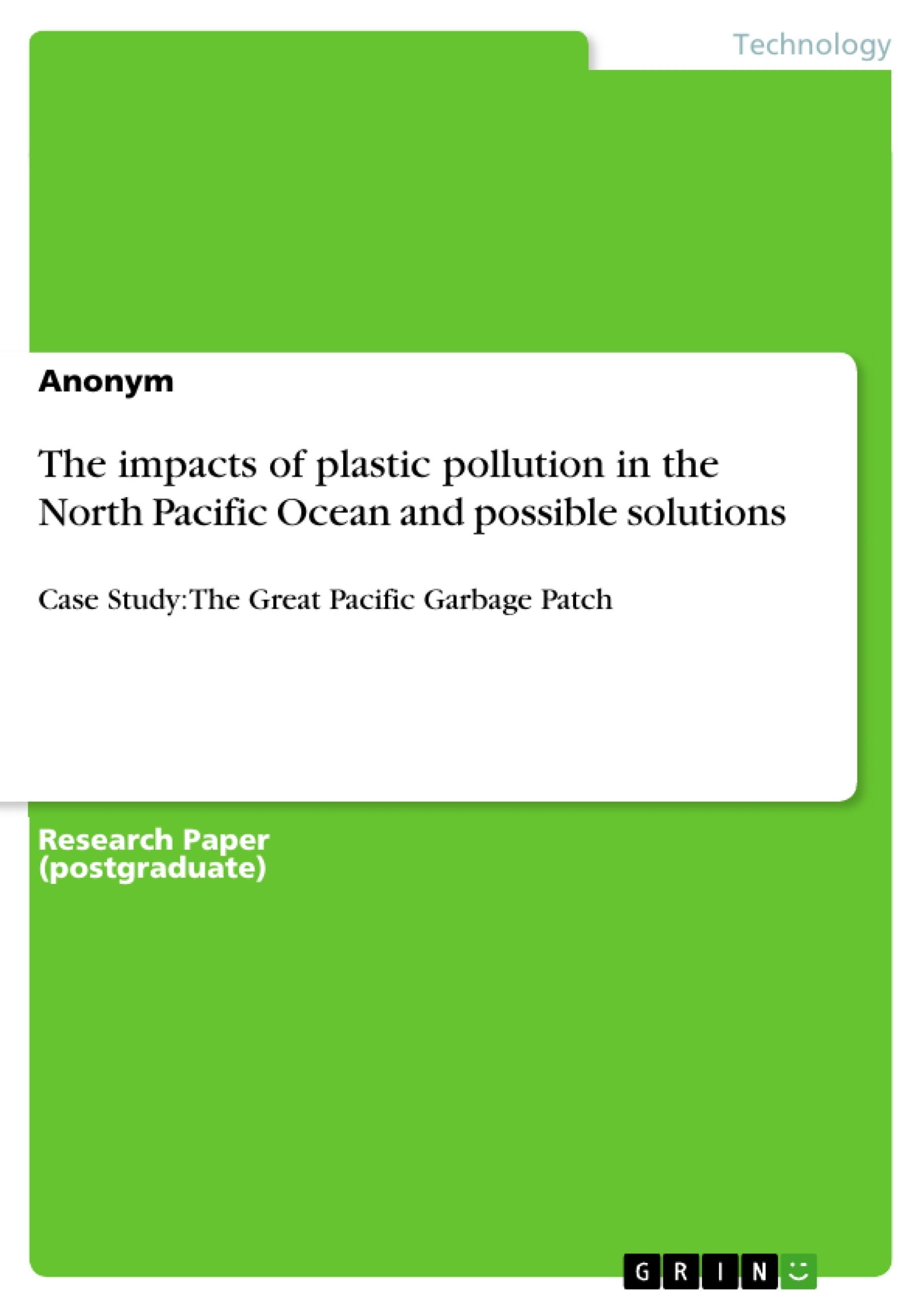Rapid population growth and enormous urban and coastal developments have increased the anthropogenic pollution into the oceans. Human activities may responsible for the decline in biodiversity and productivity of marine ecosystems, resulting in the depletion of human marine food resources (Jenssen, 2003).
Furthermore, the marine environment is an important resource for human welfare and health and fortunately in recent years awareness of its intrinsic value has increased (Derraik, 2002). One particular type of threat to marine ecosystems is the pollution from plastics. These particles are a serious treat to the marine biota and human life and entail significant economic and social costs. Further, they reduce the aesthetic and perhaps intrinsic value of the marine environment (Jenssen, 2003).
The aim of this paper is to examine the threats from plastic pollution and introduce an interesting case study from the North Pacific Ocean. The paper will describe the current policies and propose market based instruments which can provide solution to the issue.
Table of Contents
- Introduction
- The Great Pacific Garbage Patch
- Threats of plastic debris to marine biota and human health.
- Ingestion of plastic
- Plastic ingestion and persistent organic pollutants..
- Entanglement of plastic debris
- Plastic scrubbers (small plastic particles).
- Invasive species.
- Other socio-economic considerations.
- Possible solution options.
- Policy measures.
- Market based instruments.
- Conclusion..
Objectives and Key Themes
The aim of this paper is to examine the threats from plastic pollution and introduce an interesting case study from the North Pacific Ocean. The paper will describe the current policies and propose market based instruments which can provide a solution to the issue.
- Impacts of plastic pollution on marine ecosystems
- The Great Pacific Garbage Patch as a case study
- Threats of plastic debris to marine biota and human health
- Possible solutions for plastic pollution
- Policy and market-based instruments
Chapter Summaries
- Introduction: This section introduces the topic of plastic pollution and its impact on marine ecosystems. It highlights the growing threat of plastic pollution and its detrimental effects on marine biodiversity and human health.
- The Great Pacific Garbage Patch: This chapter focuses on the Great Pacific Garbage Patch, a massive accumulation of plastic debris in the North Pacific Ocean. It describes its formation, size, and the various types of plastic debris found within it.
- Threats of plastic debris to marine biota and human health: This chapter examines the various ways in which plastic debris harms marine life and human health. It discusses the dangers of ingestion, entanglement, and the bioaccumulation of persistent organic pollutants (POPs) through plastic ingestion.
- Other socio-economic considerations: This chapter explores the broader economic and social implications of plastic pollution. It discusses the costs associated with plastic pollution and its impact on tourism and fishing industries.
- Possible solution options: This chapter examines potential solutions for addressing plastic pollution. It outlines various policy measures and market-based instruments that can be implemented to reduce plastic waste and its impact on the marine environment.
Keywords
The main keywords and focus topics of this text include: plastic pollution, marine ecosystems, Great Pacific Garbage Patch, marine biota, human health, ingestion, entanglement, persistent organic pollutants (POPs), policy measures, market-based instruments, socio-economic impacts.
- Citation du texte
- Anonym (Auteur), 2010, The impacts of plastic pollution in the North Pacific Ocean and possible solutions, Munich, GRIN Verlag, https://www.grin.com/document/157133



